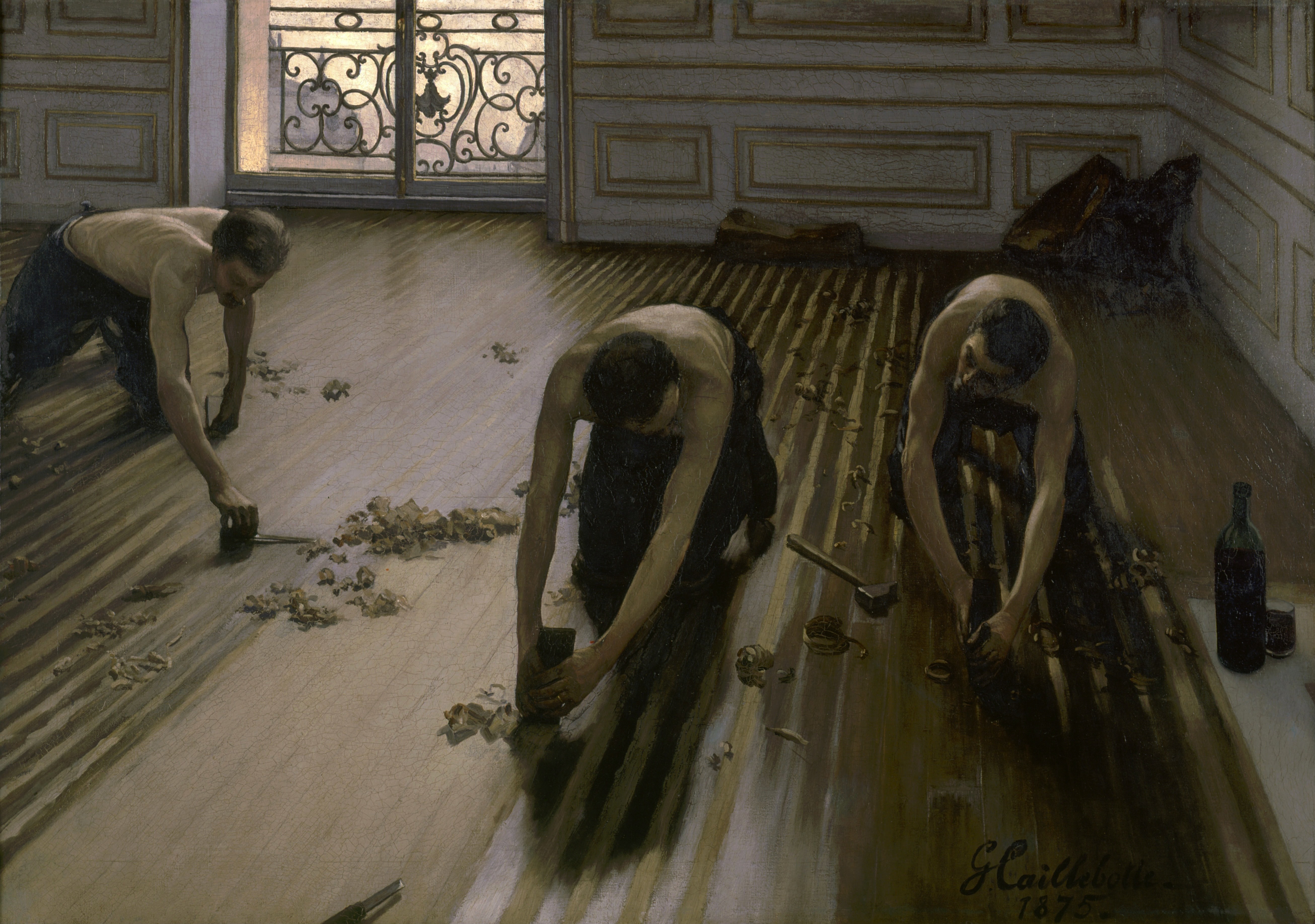Mid-way through his career Jean-François Millet deemed himself painter of the peasants. Growing up in a rural community in Normandy, France, with a peasant farmer as a father,
Millet knew first hand how labor intensive the work of lower class could be. He himself had worked the fields until he was eighteen and left home to study in Paris, France. He understood both the mental and physical strain such intensive work had on the people of his community.
Millet uses lighting and shadows in a unique way. He places a shadow over most of his subjects faces, hiding them. By doing so he generalizes the people and succeeds in representing not just an individual, but a community. Millet thought of his family and the rest of the working class to be true heros, and that they deserved to be portrayed as so.
In all of Millet’s rural paintings he uses the same color palette of neutral tones, rarely including vibrant colors. The most vibrant color, in this case the blue of the man’s shirt, I would only consider so compared to the rest of the colors. His paintings have a dusty finish to them, showing the audience how dirty the work of his people can be. He includes some religious ties in his paintings as well. It’s often debated whether this was because he was raised in a religious home or if it was a tactic to make his work more profitable. Either way he subtly hints at a readjustment in society.

















_-_Google_Art_Project.jpg)

